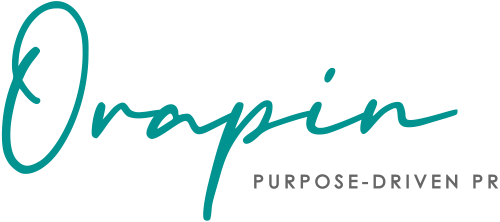
Before you start envisioning an all out Game of Thrones-type battle between the PR camp and the advertising camp, hear us out. We are firm believers that PR should be one component of an organization’s overall marketing strategy. In addition to PR, that strategy, depending on the business, might include traditional advertising, SEO, digital ad campaigns, social media, and a whole host of other efforts to position the brand in the best way possible to prosper and grow. However, there are instances where PR can have a leg up on paid advertising efforts, and for these reasons, we believe it should always be considered as an integral part of the overall marketing strategy. Here are five reasons why PR is vitally important to any organization’s overall marketing strategy.
- PR provides a third-party endorsement. According to Cision’s The Earned Media Opportunity study, audiences view earned media as the most authentic form of marketing. As a company, you can tell the world how wonderful your product or service offering is through a thousand different avenues and outlets. But if someone else, such as a third-party expert on the topic, states how wonderful your product is then potential consumers are hearing your message from a source that they trust and this endorsement can provide an invaluable sales boost. A 2014 Nielsen study on the role of content in the consumer decision-making process stated “On average, expert content lifted familiarity 88% more than branded content,” meaning earned media generated from a PR campaign is 88% more effective than advertising at building awareness with a brand or organization. Beyond the endorsement, trusted news and influencer outlets touting your product or service provides credibility. Businesses can sing their own praises via owned and paid content, but having a third-party sing their praises can rocket consumer trust and confidence, thus giving the brand valuable reputation capital.
- PR provides the opportunity for in-depth storytelling. Nonprofits, purpose-driven companies, and many businesses have amazing success stories to tell. PR efforts, through owned content, detailed pitches, and byline articles, provide an opportunity to tell your organization’s story. The general public can get some sense of your successes through a print or social ad, or even a short broadcast commercial, but a full-length feature story provides an opportunity to go in-depth on the challenges your organization has overcome, the successes you’ve achieved, and the impact those successes have had on the community.
- PR is often a much more affordable option than advertising. If you’ve ever researched costs for broadcast or print advertising, you will know this to be true. Advertising is expensive, and, for a multi-thousand dollar ad spend, your company can be featured in the portion of the broadcast or publication that people tend to ignore. For smaller organizations or nonprofits who are working with a limited budget, advertising just isn’t an option. Instead, a targeted media outreach campaign or expert positioning campaign can land your product or work within the main news section of the broadcast or as part of a feature article. The end result is much more bang for a much smaller buck.
- PR keeps returning on the investment. Whereas advertising is fleeting, feature articles last forever. Your 20-second commercial, your ad on Instagram or in print has a limited lifespan. Here today, gone tomorrow (or in 10 seconds). But articles or segments featuring your product and service remain searchable for years to come, meaning a single editorial placement announcing new research, a product launch, or a humanitarian success story can and will continue to return on the original investment as long as the internet allows searches.
- PR campaigns allow for more variable targets and larger reach. One advertisement in one publication will reach one small, targeted audience, most of whom will ignore said ad. One press release can be sent directly to many writers and editors who are interested in covering that specific topic. Story-specific pitching and several rounds of individualized follow-up secure feature stories and inclusions. Once posted to an online newswire, reach can explode as the story is picked up by hundreds of varying news outlets, from micro to macro. Published articles often yield follow up stories from reporters over the course of several years. Ongoing expert positioning of company leadership builds corporate and individual clout. Owned content reinforces corporate leadership’s expertise. The balloon effect of just one PR campaign can be infinite.
As aforementioned, we do not mean to slam advertising. Targeted ad campaigns and strategic placements certainly have a time and place in almost every marketing strategy and can be an effective tool to drive awareness. But with PR as part of the equation, advertising dollars can go further as ads help to reinforce PR messages. As an agency, we share with clients this holistic approach to marketing – that every marketing toolbox needs a variety of tools to tackle the job and that they should consider a variety of ways to engage with their stakeholders through many different channels.

Diana Crawford is a seasoned public relations consultant with more than 15 years of agency, consulting, and in-house experience. She joined Orapin in 2013 and manages account services and client communications strategy development. She has worked across a variety of industries and has expertise with professional services, food/alcohol, health and wellness, lifestyle, sports, education, tech, and non-profit organizations.
